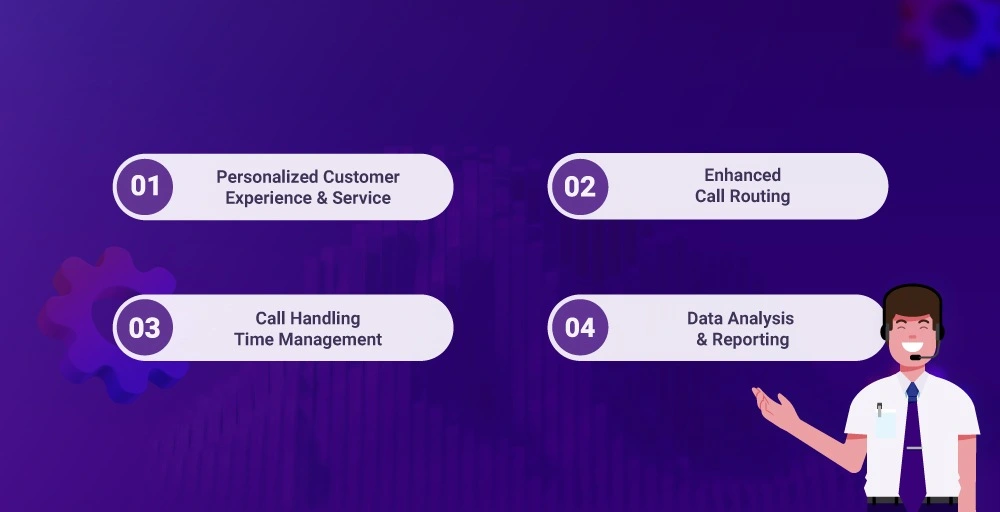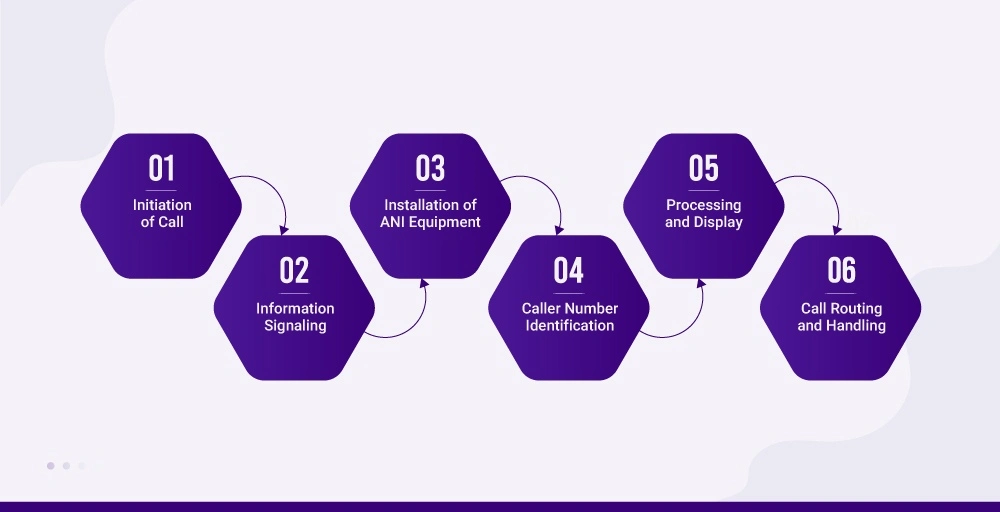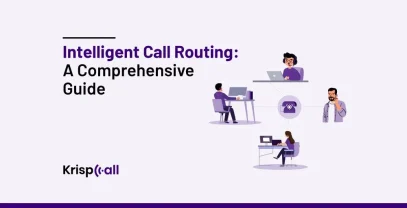Are you facing challenges in your call center☎️ in managing a large volume of inbound calls and simultaneously providing timely service to customers?
Are you frustrated with scams, robocalls, and telemarketing calls? If so, Automatic Number Identification (ANI) is the latest VoIP technology you should consider for a good telecommunications network. It helps streamline the call routing process and identify callers’ and customers’ information.
In this blog, you will learn about Automatic Number Identification, its benefits, examples, steps on how it works, etc. So, Let’s get started.
🔑KEY HIGHLIGHTS
- When a customer calls toll-free numbers, the ANI technology automatically captures phone numbers and other relevant information.
- Real-time ANI allows call centers to quickly and efficiently identify callers and provide personalized experience and service, helping improve customer satisfaction and increase call center efficiency.
- ANI is mainly used for inbound calls, but it can also be used for outbound calls.
What is Automatic Number Identification?
Automatic Number Identification (ANI) is a VoIP technology that identifies and displays the caller’s telephone number during an inbound call. It is mainly used in call centers, emergency services, telecommunication companies, technology providers, etc. ANI helps to identify the signaled information of the caller, which is transmitted along with the call.

The American Telephone and Telegraph Company (AT&T) initially developed automatic number identification systems (ANI) for long-distance calls on the Bell System. These systems eliminated the need for telephone operators to record calls manually.
ANI is an important feature and part of the Automatic Call Distributor system, which is vital in routing inbound calls. ANI was mainly used for billing purposes. It allows the system to identify the caller’s name, and then the ACD system can route the call to the specific active agent, queue, Interactive Voice Response, or department. It displays the number of the calling party in real time to the call center agent.
Let’s give an example for ANI. Suppose Mr. John calls a customer support contact center for billing purposes. Once his call arrives at the Automatic Call Distribution system, ANI identifies the number automatically. The ACD system checks its database based on John’s ANI information. ACD then routes the call to the appropriate customer service agent or department. The ANI information pops up on the agent’s screen, providing every detail of John.
What are the Benefits of ANI in Call Centers?
ANI is an important aspect or feature for call centers. A call center agent should know about the Automatic Number Identification before receiving calls from the callers.

1. Personalized Customer Experience and Service
Call Center agents and departments can access caller information before answering their call. This enables agents to provide personalized customer service, anticipating their needs. Thus, it enhances clients’ experience as it allows contact center agents to greet the caller by their name and foster a positive relationship with customer satisfaction.
2. Enhanced Call Routing
ANI allows the call routing process to be enhanced efficiently by identifying the phone number of the caller. Then, the ACD system routes the incoming call to the most appropriate agent based on call history, language preference, and account status.
3. Call Handling Time Management
ANI reduces call handling time by providing agents detailed information about each caller’s ANI. Agents can determine the reason for a caller’s call and access account information without going through a lengthy verification process.
4. Data Analysis and Reporting
Call center agents and customer service departments use caller ANI information to track call volume, identify emerging trends, and make informed resource allocation decisions.
How Automatic Number Identification Works?
Automatic number identification (ANI) is based on signaling information transmitted within a telecommunications network. Here is a step-by-step process on how ANI works:

1. Initiation of Call
When the caller initiates a call, the call request is transmitted through PSTN. This exchange identifies the number and sends it to the agents in the contact centers.
2. Information Signaling
The signaling information is transmitted along with the call request. It includes the caller’s information, phone number, and other relevant details with the overall customer database.
3. Installation of ANI Equipment
This step involves extracting and sending the ANI information. Specialized equipment in the network extracts the ANI information from the signaling data associated with the incoming call. It is routed through the ACD system to its destination, where call-routing decisions are made.
4. Caller Number Identification
After the extraction and identification of signaling customer’s details through ANI equipment, it extracts and identifies the caller’s telephone number.
5. Processing and Display
It is processed and displayed to the receiver or recipient. This includes showing the caller’s number on the telephone or computer screen so the recipient can verify the caller’s identity before answering the call.
6. Call Routing and Handling
The recipient or agent can use the caller’s number to route the call to the appropriate agent or destination based on the caller’s preferences, queries, and language.
Wrapping up …
Automatic Number Identification is an important aspect of the smooth running of call centers, emergency services, telecommunication companies, and other business organizations. It revolutionizes call handling and routing, enhancing the best customer experience.
It ensures accurate data transmission by protecting the customer’s privacy and avoiding fraudulent activity. It demonstrates the transformative role of technology in improving communication and connectivity, driving innovation, and facilitating seamless interactions in an increasingly digital world.
FAQs
Are ANI and Caller ID the same?
ANI and Caller ID are 2 different terms, as ANI is the process of identification of the caller’s telephone number within the telecommunication network, while Caller ID is the process of displaying the caller’s telephone number on the receiver’s device until the call is answered.
What is the difference between ANI and DNIS?
ANI is used for call routing, handling, and caller ID, while DNIS is used for Interactive Voice Response (IVR) and Automatic Call Distributors (ACD) systems.
Is ANI secured?
ANI is secured by verifying Caller ID and enhancing security measures in telecommunication systems. However, it may be vulnerable to spoofing or data manipulation in certain cases.





